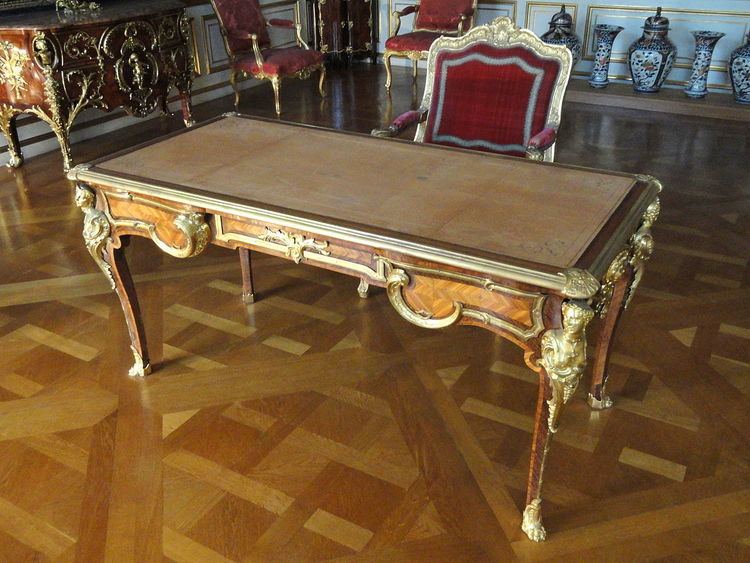Name Charles Cressent | Died 1768, Paris, France | |
 | ||
A Fine Transitional Style Gilt-Bronze Mounted Sculptural Commode, After Charles Cressent
Charles Cressent (1685–1768) was a French furniture-maker, sculptor and fondeur-ciseleur of the regence style. As the second son of Francois Cressent, sculpteur du roi, and grandson of Charles Cressent, a furniture-maker of Amiens, who also became a sculptor, he inherited the tastes and aptitudes which were likely to make a finished designer and craftsman. Even more important perhaps was the fact that he was a pupil of Andre Charles Boulle. Trained in such surroundings, it is not surprising that he should have reached a degree of achievement which has to a great extent justified the claim that he was the best decorative artist of the 18th century. Cressent's distinction is closely connected with the regency, but his earlier work had affinities with the school of Boulle, while his later pieces were full of originality.
He was likewise a sculptor, and among his plastic work is known to have been a bronze bust of Louis, the son of Philip II, Duke of Orleans, for whom Cressent had made one of the finest examples of French furniture of the 18th century the famous medaillier now in the Bibliotheque Nationale. Cressent's bronze mounts were executed with a sharpness of finish and a grace and vigour of outline which were hardly excelled by his great contemporary Jacques Caffieri. His female figures placed at the corners of tables are indeed among the most delicious achievements of the great days of the French metal worker.
The work of identification is rendered comparatively easy in his case by the fact that he published catalogues of three sales of his work. These catalogues are highly characteristic of the man, who shared in no small degree the personal bravura of Cellini, and could sometimes execute almost as well. He did not hesitate to describe himself as the author of a clock worthy to be placed in the very finest cabinets, the most distinguished bronzes, or pieces of the most elegant form adorned with bronzes of extra richness. He worked much in marqueterie, both in tortoiseshell and in brilliant colored woods. He was indeed an artist to whom color appealed with especial force. The very type and exemplar of the feeling of the regency.
